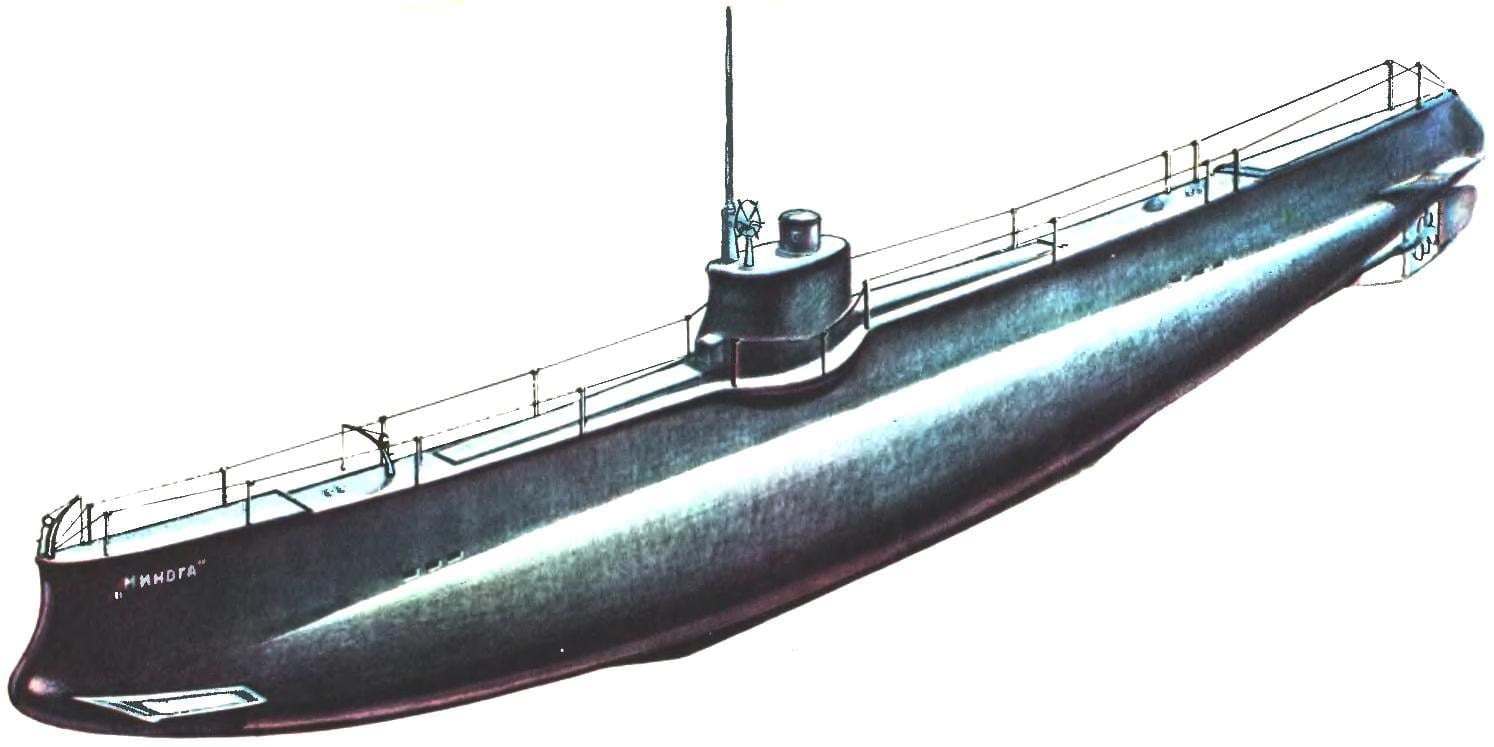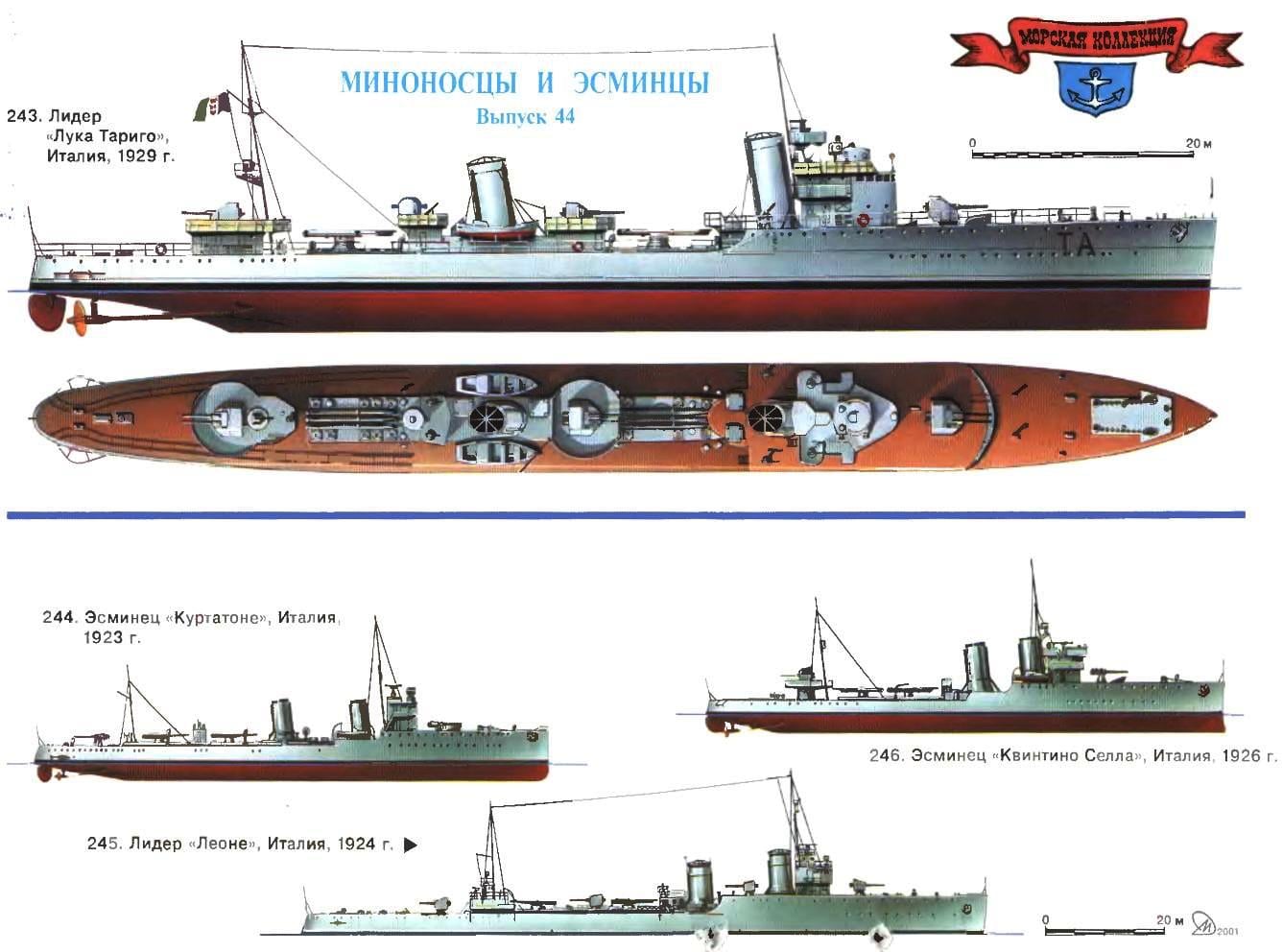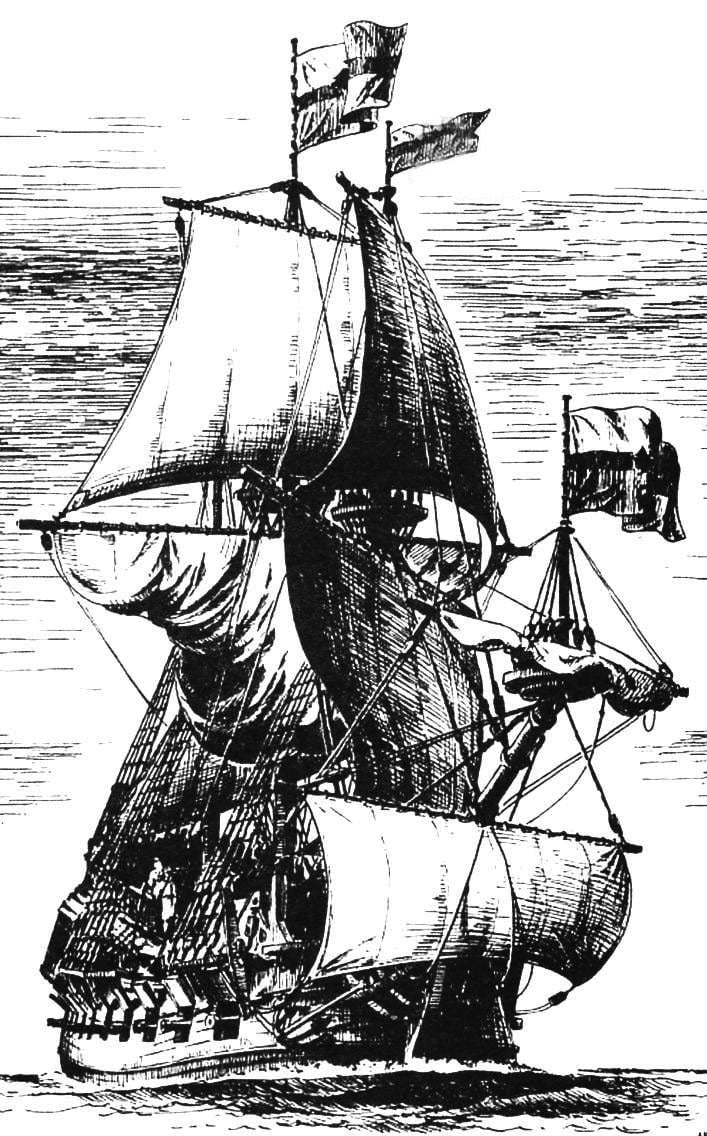 As we have noted, it is no wonder the leadership of the Soviet naval forces still in the early stages of their development in the 1920-ies turned his gaze exactly on submarines. Because it is relatively cheap and quick to build tool on first sight allow to eliminate a huge backlog “of the fleet of workers and peasants” from the naval forces of the “imperialists”. Moreover, that was before my eyes the example of Germany, which nearly brought the First world to the knees the most powerful Maritime power in the world.
As we have noted, it is no wonder the leadership of the Soviet naval forces still in the early stages of their development in the 1920-ies turned his gaze exactly on submarines. Because it is relatively cheap and quick to build tool on first sight allow to eliminate a huge backlog “of the fleet of workers and peasants” from the naval forces of the “imperialists”. Moreover, that was before my eyes the example of Germany, which nearly brought the First world to the knees the most powerful Maritime power in the world.
Marine
THE LAST FIGHT “TERRIBLE”
 The Russo-Japanese war, which began with a sudden attack of the Japanese on Port Arthur on the night of 8/9 February 1904 and virtually ended with the defeat of the king’s fleet in the Tsushima Strait, with merciless clarity showed the backwardness and complete collapse of the Russian autocracy, incompetence and venality of its military elite. But this war showed the world great examples of valor and selflessness of the Russian soldiers, sailors, and the best part of the officers. Shots, sounded in the outer Harbor of Port Arthur, was a prelude to the heroic drama in Chemulpo, where in an unequal battle against the squadron of Admiral Urn die the cruiser “Varyag” and the gunboat “Korean” die with nesuderinami flags, flooded and blown up their teams, who chose death shameful surrender to the enemy.
The Russo-Japanese war, which began with a sudden attack of the Japanese on Port Arthur on the night of 8/9 February 1904 and virtually ended with the defeat of the king’s fleet in the Tsushima Strait, with merciless clarity showed the backwardness and complete collapse of the Russian autocracy, incompetence and venality of its military elite. But this war showed the world great examples of valor and selflessness of the Russian soldiers, sailors, and the best part of the officers. Shots, sounded in the outer Harbor of Port Arthur, was a prelude to the heroic drama in Chemulpo, where in an unequal battle against the squadron of Admiral Urn die the cruiser “Varyag” and the gunboat “Korean” die with nesuderinami flags, flooded and blown up their teams, who chose death shameful surrender to the enemy.“…The outcome of the war could be very different”
 In 1848 started the Danish-German war. The Germans, of the fleet which virtually did not exist, had nothing to oppose to the Danish ships, which blockaded the German coast. Then the corporal of the Bavarian army Bauer and offered to build a submarine to break the blockade. Funds for the construction of “sea diver” — so Bauer called his brainchild (16) -gave the Schleswig-Holstein army and some private pizza. In 1651 in Kiel Bay began testing this vehicle, culminating in the fact that he… sank. Bauer and two members of the crew were miraculously saved, and the boat remained lying at the bottom of the Bay.
In 1848 started the Danish-German war. The Germans, of the fleet which virtually did not exist, had nothing to oppose to the Danish ships, which blockaded the German coast. Then the corporal of the Bavarian army Bauer and offered to build a submarine to break the blockade. Funds for the construction of “sea diver” — so Bauer called his brainchild (16) -gave the Schleswig-Holstein army and some private pizza. In 1651 in Kiel Bay began testing this vehicle, culminating in the fact that he… sank. Bauer and two members of the crew were miraculously saved, and the boat remained lying at the bottom of the Bay.
WINDS, SAILORS AND SOLDIERS
 Rapid growth in the number of high-speed torpedo ships in the Italian Navy, which began in 1920-e years were not accidental, although the background of stagnation in the global shipbuilding industry seemed the exception. Mussolini came to power, has seriously embarked on a long-standing dream — to make the Mediterranean Mare Nostrum — “our sea”. In the area of interest of Italy to reach the Balkans, Greece, Turkey, North Africa. Accordingly, defined the main potential enemy — France. So between the two countries began the race for naval armaments, in which a special role was given to leaders and destroyers.
Rapid growth in the number of high-speed torpedo ships in the Italian Navy, which began in 1920-e years were not accidental, although the background of stagnation in the global shipbuilding industry seemed the exception. Mussolini came to power, has seriously embarked on a long-standing dream — to make the Mediterranean Mare Nostrum — “our sea”. In the area of interest of Italy to reach the Balkans, Greece, Turkey, North Africa. Accordingly, defined the main potential enemy — France. So between the two countries began the race for naval armaments, in which a special role was given to leaders and destroyers.
THE FIRST SHIP OF THE FIRST OF THE ADMIRALTY
 “Eagle” – the first Russian two-decked warship was built in 1669. The shipyard was laid in the village of Dedinovo, 26 km from Kolomna. This place is on the left Bank of the Oka river at the confluence of the Moscow river became the first Russian Admiralty. The organizer of the buildings was a prominent statesman of the time O. L. Ordin-Nashchokin. In spite of the great difficulties with materials and labor, the ship was able to float in less than a year -26 may 1668. However, to finish it did not, and he wintered on the river. In spring 1669 the work was resumed. On 25 April issued a decree on the award of the ship of the name “eagle”.
“Eagle” – the first Russian two-decked warship was built in 1669. The shipyard was laid in the village of Dedinovo, 26 km from Kolomna. This place is on the left Bank of the Oka river at the confluence of the Moscow river became the first Russian Admiralty. The organizer of the buildings was a prominent statesman of the time O. L. Ordin-Nashchokin. In spite of the great difficulties with materials and labor, the ship was able to float in less than a year -26 may 1668. However, to finish it did not, and he wintered on the river. In spring 1669 the work was resumed. On 25 April issued a decree on the award of the ship of the name “eagle”.
JAPANESE THREAT TO AMERICANS
 In late 1942, the Americans felt themselves masters in the district of the island of Guadalcanal, where the Japanese switched to the defensive, both on land and at sea. So Admiral Wright calmly reacted to the arrived at 11 PM a message stating that to meet his connection of four cruisers and five destroyers, there is another “Tokyo Express” — a squad of eight destroyers with reinforcements for the garrison of the island. The US ships had radar and the first discovered of the enemy. But the Japanese Admiral Tanaka, one of the most talented and cold-blooded admirals of the Second world war, led his forces between the enemy and the shore, camouflaged against the background of high cliffs. He strictly ordered not to open fire, hoping to make a sudden torpedo attack.
In late 1942, the Americans felt themselves masters in the district of the island of Guadalcanal, where the Japanese switched to the defensive, both on land and at sea. So Admiral Wright calmly reacted to the arrived at 11 PM a message stating that to meet his connection of four cruisers and five destroyers, there is another “Tokyo Express” — a squad of eight destroyers with reinforcements for the garrison of the island. The US ships had radar and the first discovered of the enemy. But the Japanese Admiral Tanaka, one of the most talented and cold-blooded admirals of the Second world war, led his forces between the enemy and the shore, camouflaged against the background of high cliffs. He strictly ordered not to open fire, hoping to make a sudden torpedo attack.
ON THE EVE OF PEARL HARBOR
 By the end of the First world war the Navy of the United States of America was large, but very strange composition: a significant linear force, the almost complete lack of any modern cruisers and a huge number of standard “flush-deck” destroyers, hundreds of which are still in completion. All attempts of heads of the Navy to proceed to create a new, more modern torpedo ships long enough to encounter the displeasure of congressmen, preached isolationism and “reasonable sufficiency”. Only fifteen years later, when the gap in class destroyers aggressively competing for first place in the world fleet has become abundantly clear to the American admirals were able to overcome political and financial obstacles.
By the end of the First world war the Navy of the United States of America was large, but very strange composition: a significant linear force, the almost complete lack of any modern cruisers and a huge number of standard “flush-deck” destroyers, hundreds of which are still in completion. All attempts of heads of the Navy to proceed to create a new, more modern torpedo ships long enough to encounter the displeasure of congressmen, preached isolationism and “reasonable sufficiency”. Only fifteen years later, when the gap in class destroyers aggressively competing for first place in the world fleet has become abundantly clear to the American admirals were able to overcome political and financial obstacles.
ANCHOR — FROM ANCIENT TIMES TO THE PRESENT DAY
 Oddly enough, but we tend to think of Ancient Rus agrarian power, traded mainly salt, hemp, wax, fur goods, linen. Meanwhile our ancestors were taken abroad and iron, and iron, famous for its quality all over Europe. He was put in stripes and in the form of finished products — axes, chisels, bells, anchors. Yes, the anchors, because it is now proved that the Russian masters forged them long before the baptism of Rus. This is evidenced by the many exhibits of local history museums, tells the epic.
Oddly enough, but we tend to think of Ancient Rus agrarian power, traded mainly salt, hemp, wax, fur goods, linen. Meanwhile our ancestors were taken abroad and iron, and iron, famous for its quality all over Europe. He was put in stripes and in the form of finished products — axes, chisels, bells, anchors. Yes, the anchors, because it is now proved that the Russian masters forged them long before the baptism of Rus. This is evidenced by the many exhibits of local history museums, tells the epic.BEST-IN-CLASS
 The attack on the destroyer “Hadley” in radar patrol from the Japanese island of Okinawa, where she landed U.S. marine corps, began early in the morning. The aircraft flew singly and in groups, dropping bombs and firing from onboard weapons. Some of them managed pilots-suicide bombers tried to RAM a lone ship. The Americans resisted fiercely. Guns and machine guns of the destroyer watered the enemy’s steel; by the end of this fateful day, the sailors claimed to be twenty-downed aircraft! But “Hadley” paid in full: 250-kg bomb struck his nose, a guided rocket bomb “Baka” (essentially a small plane) got in the middle part, and a kamikaze crashed into the stern.
The attack on the destroyer “Hadley” in radar patrol from the Japanese island of Okinawa, where she landed U.S. marine corps, began early in the morning. The aircraft flew singly and in groups, dropping bombs and firing from onboard weapons. Some of them managed pilots-suicide bombers tried to RAM a lone ship. The Americans resisted fiercely. Guns and machine guns of the destroyer watered the enemy’s steel; by the end of this fateful day, the sailors claimed to be twenty-downed aircraft! But “Hadley” paid in full: 250-kg bomb struck his nose, a guided rocket bomb “Baka” (essentially a small plane) got in the middle part, and a kamikaze crashed into the stern.
START FROM THE DUCE
 We left the Italian fleet during the “great war”. Unlike France, Italy is not as strongly experienced its hardships; in fact, the only really available to the enemy, Austria-Hungary, “processed” beyond its fleet. The allies have allocated more than sufficient power. So, the Italians stayed mainly to prevent possible attacks of the Austrians against their shores. And to continue the development of all marine weapons, including, of course, and so “fashionable” submarine forces.
We left the Italian fleet during the “great war”. Unlike France, Italy is not as strongly experienced its hardships; in fact, the only really available to the enemy, Austria-Hungary, “processed” beyond its fleet. The allies have allocated more than sufficient power. So, the Italians stayed mainly to prevent possible attacks of the Austrians against their shores. And to continue the development of all marine weapons, including, of course, and so “fashionable” submarine forces.










